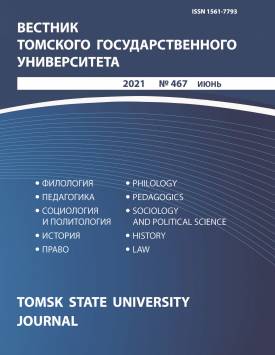The Socio-Economic Situation in Galicia in the 1920s-1930s
In the 1920s-1930s, the socio-economic situation in Galicia was formed under the influence of global, national, and regional economic trends. Galicia was a multi-ethnic, agro-industrial region, with its economy mainly focused on raw materials. Being the source of raw materials and professional workforce, the region was widely known for agricultural production, trade balance, and a high rate of foreign investments. The aim of the study is to give a comprehensive outline of the state of the socio-economic development of Galicia in the 1920s-1930s, in particular, to characterize ethnic and demographic processes, the social structure and employment of the population, to analyze the peculiar features of the development of the industry, agriculture, and trade. Close attention is paid to such problematic issues as the influence the socio-political and economic changes in Poland had on the population and employment rates; the economic development of the Galician region; the industries which attracted foreign investors; the economic forms which were typical of the market relations in Galicia. The materials for the article are Polish censuses of 1921 and 1931. They contain various information about the ethno-demographic situation and the socio-economic life of the then society. In addition, documents stored in the archives of Kyiv, Lviv, Ivano-Frankivsk, and Warsaw, as well as the achievements of the Ukrainian and Polish scholars (O. Verbova, V. Vyzdryk, B. Hudia, H. Kovalchak, S. Landau), were used. In the interwar period of the twentieth century, Galicia, being a part of Poland, was characterized by a multi-ethnic and multi-confessional population. Galician society was a conglomerate in which each ethnic community tried to preserve and strengthen its positions. Ukrainians, Poles, Jews, and representatives of other nationalities living in Galicia had different social structures and fields of work. The socio-economic situation in Galicia developed as an integral part of the Polish economic system but had a number of local features. The place of Galicia on the state and world markets was determined by several factors: agricultural production, trade balance, a high rate of foreign investments, sources of raw materials and workforce. The population of Galicia was involved not only in agriculture, but also in industry. The most developed were oil, woodworking and food industries, which were represented mainly by small enterprises and attracted foreign investors. Galicia was one of the largest exporters of wood and agricultural products in Europe. The region was famous for its oil fields and development of the oil industry.
Keywords
Galicia, population, economical development, industry, tradeAuthors
| Name | Organization | |
| Pasitska Oksana I. | I. Krypyakevych Institute of Ukrainian Studies of the National Akademy of Sciences of Ukraine | pasitska@ukr.net |
References

The Socio-Economic Situation in Galicia in the 1920s-1930s | Vestnik Tomskogo gosudarstvennogo universiteta – Tomsk State University Journal. 2021. № 467. DOI: 10.17223/15617793/467/25
